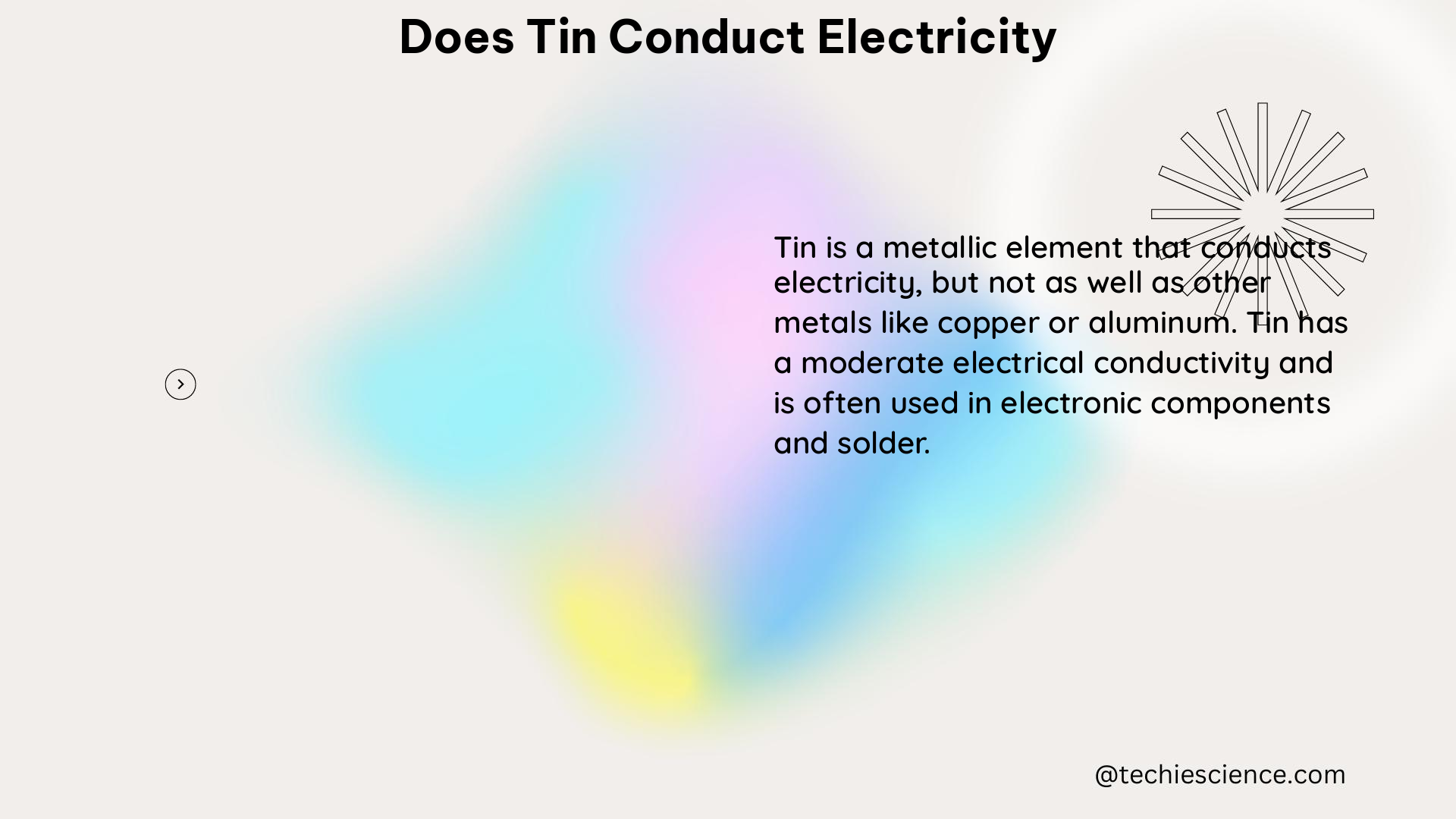Tin, with the chemical symbol Sn, is a post-transition metal that is considered a fair conductor of electricity. Its electrical conductivity is lower than that of copper and silver, which are among the best conductors, but it is still significantly higher than that of insulators like plastic or rubber.
Quantifying Tin’s Electrical Conductivity
In terms of quantifiable data, tin has a room temperature electrical conductivity of approximately 8.6 x 10^6 S/m (Siemens per meter). This value can vary slightly depending on the purity and crystalline structure of the tin sample.
To put this into context, let’s compare tin with some other materials:
| Material | Electrical Conductivity (S/m) |
|---|---|
| Copper | 5.96 x 10^7 |
| Silver | 6.30 x 10^7 |
| Tin | 8.6 x 10^6 |
| Rubber | 1 x 10^-14 |
The electrical conductivity of tin can be affected by factors such as temperature, impurities, and strain. For example, the conductivity of tin decreases as the temperature increases due to the increased thermal motion of the atoms, which disrupts the movement of electrons.
The Physics of Tin’s Electrical Conductivity

The electrical conductivity of a material is related to its ability to allow the flow of electric charge. In metals like tin, the electrical conductivity is determined by the movement of free electrons in the metal’s crystal lattice. These free electrons are able to move freely throughout the lattice, allowing them to conduct electricity.
The electrical conductivity (σ) of a material is related to its resistivity (ρ) by the equation σ = 1/ρ. The resistivity of a material is a measure of its resistance to the flow of electric current, and is typically measured in ohm-meters (Ωm). The conductivity, on the other hand, is measured in siemens per meter (S/m), and is a measure of the material’s ability to conduct electricity.
In physics, the electrical conductivity of a material is often described using the Drude model, which is a classical model that describes the behavior of electrons in a metal. According to the Drude model, the electrical conductivity of a metal is given by the equation:
σ = ne^2τ/m
Where:
– n is the number density of free electrons
– e is the elementary charge
– τ is the relaxation time
– m is the mass of an electron
The relaxation time (τ) is a measure of the time it takes for an electron to lose its momentum after being accelerated by an electric field. In metals like tin, the relaxation time is typically very short, which allows the electrons to move freely and conduct electricity.
Factors Affecting Tin’s Electrical Conductivity
In addition to the Drude model, there are other theoretical frameworks that can be used to describe the electrical conductivity of materials, such as the quantum mechanical model of conduction in metals.
When working with conductive materials like tin, it’s also important to consider factors such as temperature, impurities, and strain, as these can all affect the electrical conductivity of the material. For example, impurities in the crystal lattice can scatter the free electrons and reduce their mobility, which in turn reduces the electrical conductivity of the material.
Applications of Tin’s Electrical Conductivity
In addition to its use in electrical conductors, tin is also used in a variety of other applications, such as in the production of solder, tin plating, and in the manufacture of tin cans. Understanding the electrical conductivity of tin, as well as its other properties, is essential for engineers and materials scientists who work with this material.
Conclusion
In summary, tin is a fair conductor of electricity with a room temperature electrical conductivity of approximately 8.6 x 10^6 S/m. This value is lower than that of copper and silver, but significantly higher than that of insulators like rubber. The electrical conductivity of tin is determined by the movement of free electrons in the metal’s crystal lattice, and can be described using the Drude model or other theoretical frameworks. Understanding the electrical conductivity of tin, as well as its other properties, is essential for engineers and materials scientists who work with this material.
References:
1. “Electrical Conductivity”, HyperPhysics, https://hyperphysics.phy-astr.gsu.edu/hbase/electric/cond.html
2. “Conductivity of Metals and Semiconductors”, PhysicsNet, https://www.physicsnet.co.uk/a-level-physics/as-level-physics/mechanics-electricity-and-waves/conductivity-of-metals-and-semiconductors/
3. “Tin as a Material”, Tin Technology Center, https://www.tintech.org/tin-as-a-material/

I am Alpa Rajai, Completed my Masters in science with specialization in Physics. I am very enthusiastic about Writing about my understanding towards Advanced science. I assure that my words and methods will help readers to understand their doubts and clear what they are looking for. Apart from Physics, I am a trained Kathak Dancer and also I write my feeling in the form of poetry sometimes. I keep on updating myself in Physics and whatever I understand I simplify the same and keep it straight to the point so that it deliver clearly to the readers.